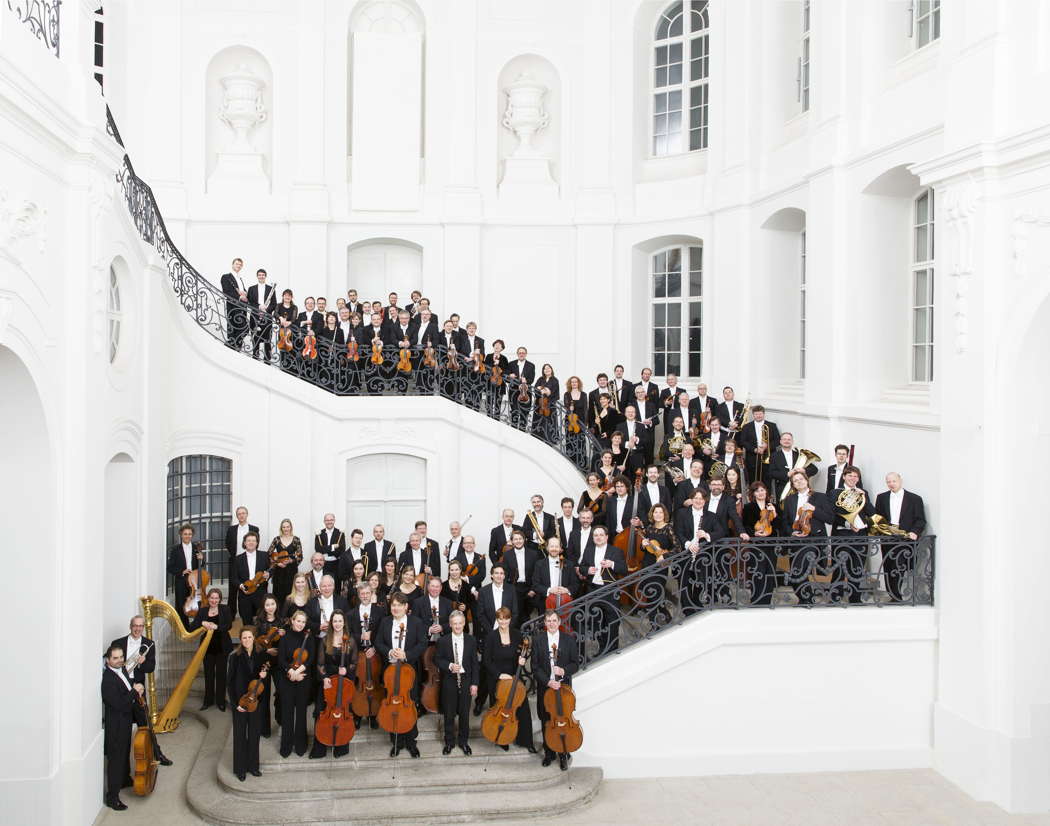- Jan Stulen
- The Bird is an Alphabet
- Chopin: Prelude Op 28 No 6
- Johan Schop
- Dave Monaco
- Cosima Wagner
- Joseph Sowa
- Romain Falik
 VIDEO PODCAST: New Recordings - Find out about Adrian Williams, Andriy Lehki, African Pianism, Heinrich Schütz and Walter Arlen, and meet Stephen Sutton of Divine Art Recordings, conductor Kenneth Woods, composer Graham Williams and others.
VIDEO PODCAST: New Recordings - Find out about Adrian Williams, Andriy Lehki, African Pianism, Heinrich Schütz and Walter Arlen, and meet Stephen Sutton of Divine Art Recordings, conductor Kenneth Woods, composer Graham Williams and others.
 SPONSORED: Vocal Glory - Massenet's Manon in HD from New York Metropolitan Opera, enjoyed by Maria Nockin.
SPONSORED: Vocal Glory - Massenet's Manon in HD from New York Metropolitan Opera, enjoyed by Maria Nockin.
All sponsored features >>
A Huge Dynamic Range
MIKE WHEELER listens to Maria Ioudenitch, Stanislav Kochanovsky and the Dresden Philharmonic Orchestra
The Prelude to Musorgsky's Khovanschchina belies the conflicts in the opera itself with a serene freshness well brought out by the Dresden Philharmonic Orchestra at the start of its concert with conductor Stanislav Kochanovsky - Royal Concert Hall, Nottingham, UK, 19 April 2024. Shostakovich's 1958 orchestration was well served, with tremolando strings shimmering atmospherically, eloquent woodwind playing, notably from Kathrin Bäz, flute, and Daniel Hochstöger, clarinet, and deeply resonant suggestions of bell sounds adding a darker tone.
The first movement of Shostakovich's Violin Concerto No 1 has to be among the quietest, least demonstrative of any violin concerto in the repertoire. After a barely whispered cello and bass opening, soloist Maria Ioudenitch, using minimal, if any, vibrato, evoked a wandering soul, lost and bewildered. With the readier flow of the movement's second half, her account of the knotty double-stopping added intensity without sounding over-strenuous.

Maria Ioudenitch. Photo © 2021 Helge Krückeberg
The second movement set off like some hypertense tarantella, alternating with an equally strained galop. Against the orchestra's continuing drive and energy, even when in the background, Ioudenitch's performance was marked by a defiance that dare not speak its name.
A degree of relief came with the third movement, in the song-like solo line and firm passacaglia structure, or is the solo line trying to rise free of it? The cadenza, rightly, contained no hint of virtuoso flashiness. The steady build-up of tension to the end included glances back to the double-stops in the scherzo. Ioudenitch's playing had virtuosity in spades but, as throughout, it was never an end in itself.
The finale is one of Shostakovich's many not-so-short rides in a fast machine, with soloist and orchestra giving it all they'd got. The many switches of tempo were always convincing, with Shostakovich having the last wry, bitter laugh. There were times in this whole shattering performance when I felt I was hearing the work for the first time.
Ioudenitch's alertly-played encore was the third movement from Lera Auerbach's Par.ti.ta for solo violin, taking the Gavotte en Rondeau from J S Bach's Partita No 3 in all sorts of unexpected and intriguing directions.
Tchaikovsky's Sixth Symphony also opened on the edge of audibility, with Daniel Bäz's sombre bassoon solo, but it is not long before the music is protesting at the top of its voice - in fact, the orchestra's capacity for projecting a huge dynamic range was a feature of whole evening. The second theme - which in other circumstances would be hailed as one of the composer's great love themes - was full of tenderness and warmth, without letting too much out of the bag too soon. The thunderclap that launches the development section came as a palpable shock, and there was a stark fierceness as the protest came to head. The last statement of the second theme had all the broad sweep that Tchaikovsky was keeping in reserve for that moment, while the concluding processional had a dry-eyed stoicism.
The second movement has been called a 'broken-backed waltz', but there was nothing broken in this graceful, elegant performance, the five-in-a-bar metre swaying like the most natural thing in the world (which, of course, it is in a lot of East European traditional music). In addition, the final pages took on a haunted quality. The mercurial opening of the third movement scampered and slithered like something that could easily have come out of The Nutcracker, but with the insidious march rhythm already starting to infiltrate. The performance became positively frantic, and the ending highlighted the music's brash, false jollity.
Despite some audience applause, the Finale pitched straight in, giving full voice to the music's further protests, suggesting that Tchaikovsky was trying to exorcise not so much fate itself as his belief in it, to the point where I wondered - would he have come through the crisis, and what would his musical landscape have been like if he'd lived? But amid the snarling Dresden stopped horns, the eloquence of the final lament was unanswerable.

The Dresden Philharmonic Orchestra. Photo © 2014 Marco Borggreve
In its way it was all every bit as devastating as the Shostakovich had been. Stanislav Kochanovsky held the silence that followed for what must have been a good ten seconds or more; a pity some of the audience started applauding before he was ready to let it go.

Stanislav Kochanovsky. Photo © Marco Borggreve
The encore was just about the only piece that could conceivably have followed. Rachmaninov's Vocalise, in, I assume, the composer's own orchestration, was a sensitive choice, sensitively played.
Copyright © 2 May 2024
Mike Wheeler,
Derby UK



